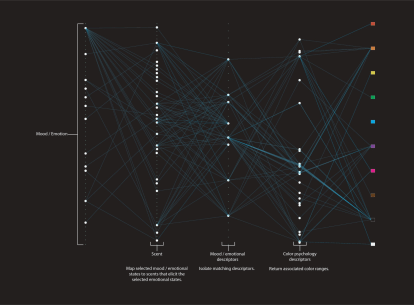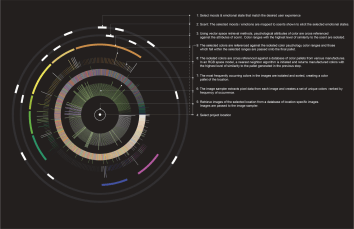Olfactory Architecture™

When we design places, we often imagine how they look, function, and enable social interaction — not how they smell. The association between fragrance, emotion, and memory is a phenomenon rooted in the very structure of our brains. Of the five senses, our sense of smell is the only one directly wired to the emotion-processing limbic system, which controls pre-cognitive processes like memory, emotion, and more importantly, spatial awareness. Hugo worked with experts in the viticulture and perfumery industries, scientists, physicists, neurologists, and sommeliers, as well as conducted spatial investigations with users across the country to identify connections between our spatial memory and scent. Using this data, Hugo created the ScentographTM, a design tool that links spatial design with our sense of smell.

The ScentographTM provides designers with a data driven approach that pairs scent and emotion with color, materiality, texture, daylight, and other spatial attributes such as depth, width, and height. This multi-sensorial design approach empowers the designer to unlock the power of scent – using olfactory design to increase the perception of daylight in a space where it is otherwise unavailable; to increase collaboration by perceptually heightening the office space; or to alter the perceived temperature of space, decreasing energy costs over time.




















